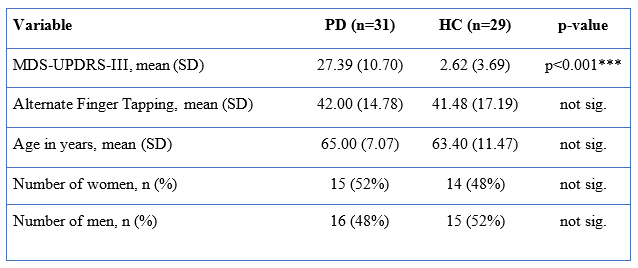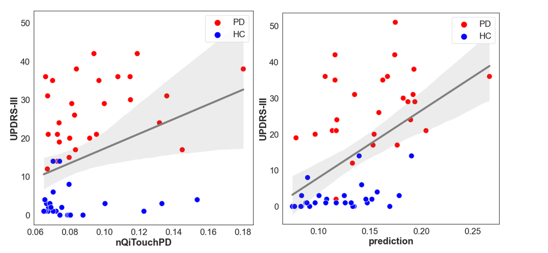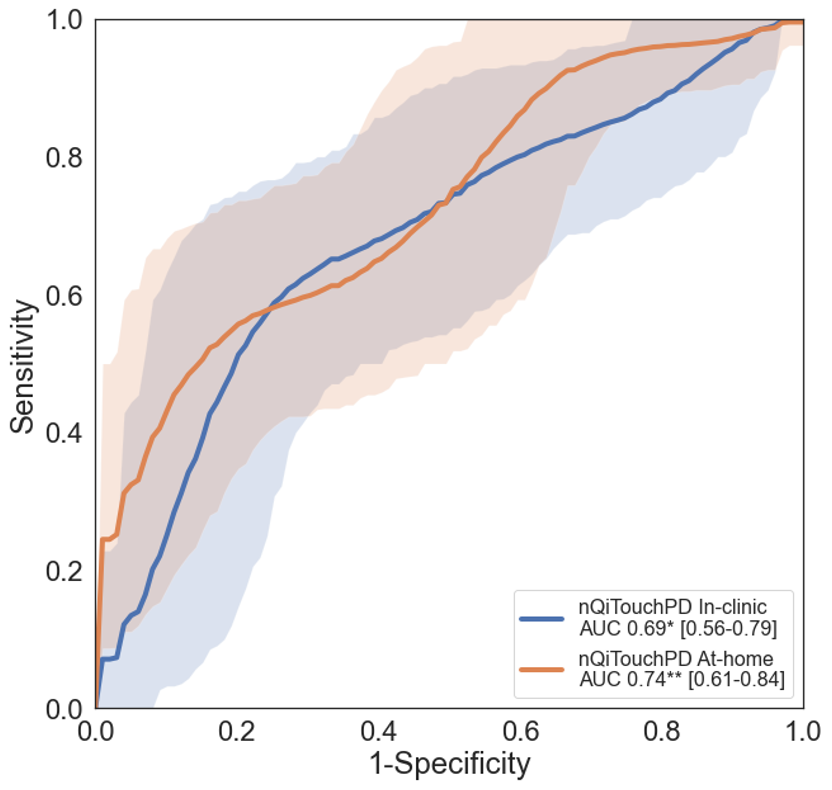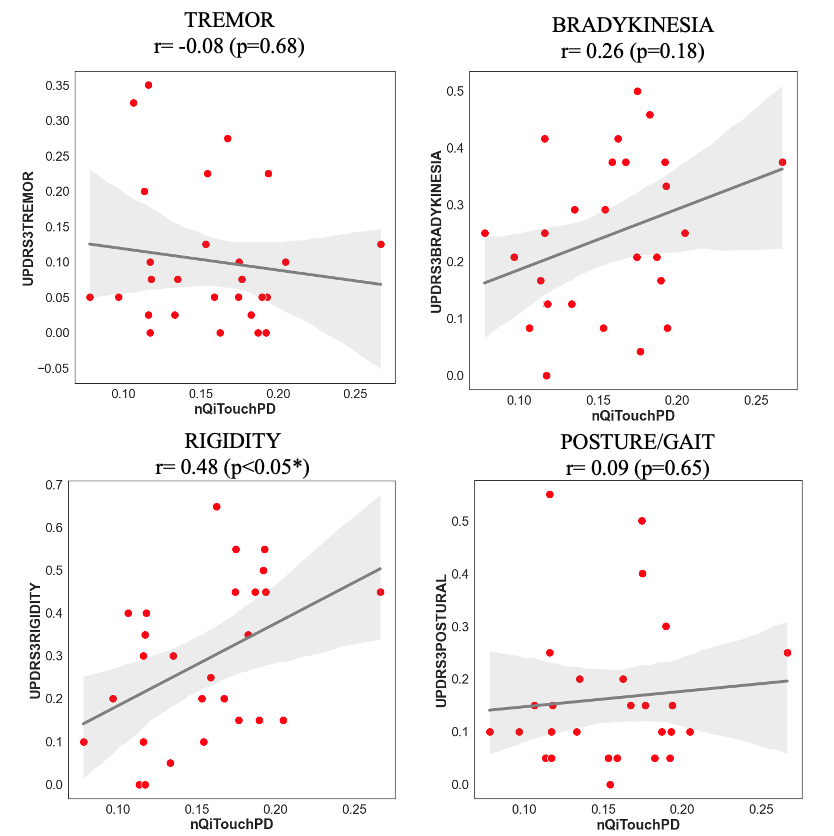Category: Technology
Objective: To characterize the viability of nQ machine learning platform via touchscreen keyboard as a digital biomarker for Parkinson disease
Background: To date, a reliable biomarker of motor severity and progression in Parkinson disease (PD) remains elusive. nQ’s machine learning platform leverages touchscreen keyboard inputs from a personal computer or smartphone to produce quantitative measurements (nQiTouchPD score) passively characterizing motor state. Indeed, typing performance in-clinic, using the nQ platform, has been shown to distinguish early PD versus normative keystroke patterns [1]. This study extends its use as a biomarker for PD motor function in the natural home setting.
Method: We enrolled participants with formal PD diagnosis of less than 10 years and their age-matched controls. The nQ keyboard application was incorporated in their personal touchscreen device. Typing performance was assessed in-clinic via the alternate finger tapping test and paragraph copy task (5-minute typing task) and at-home (normal typing activity). Each participant was then monitored for three weeks. During the third week, participants returned to the clinic for an in-person MDS-UPDRS assessment performed by a movement disorder-trained investigator. nQiTouchPD measurements in-clinic and at-home were correlated with the MDS-UPDRS Part III.
Results: A total of 31 PD and 29 controls participated, with a mean MDS-UPDRS III of 27.4 (SD=10.7) and 2.6 (SD=3.7), respectively [Table 1]. Data from 62,632 typing sessions and 1,917,626 total keystrokes were analyzed. Each participant had an average of 44.48 keystrokes per session and were active on 85.9% of total days on average. nQiTouchPD in-clinic and at-home directly correlated with MDS-UPDRS III (r=0.34, p<0.001, and r=0.53, p<0.001, respectively) [Fig 1]. A stronger correlation was demonstrated between remote typing nQiTouchPD scores and MDS-UPDRS III than with nQiTouchPD scores from controlled typing tasks in-clinic (0.74 vs 0.69) [Fig 2]. In the PD cohort, nQiTouchPD correlated best with rigidity (r=0.48; p<0.05), followed by the bradykinesia (r=0.26; p=-0.18), and least with posture/gait (r=0.09; p=0.65) and tremors (r=-0.08; p=-0.68) [Fig 3].
Conclusion: Typing data in the natural home setting via the nQ touchscreen keyboard application can differentiate PD from controls. nQiTouchPD correlated with motor states assessed using MDS-UPDRS III, supporting its potential as a PD digital biomarker.
References: [1] T. Arroyo-Gallego et al., Detection of Motor Impairment in Parkinson’s Disease Via Mobile Touchscreen Typing. IEEE Transactions on Biomedical Engineering, 2017; 64 (9):1994-2002. doi: 10.1109/TBME.2017.2664802.
To cite this abstract in AMA style:
J. Yu, P. Gandara, O. Phillips, J. Liao, A. Holmes, I. Mondesire-Crump, J. Syrotenko, S. Mruthik, T. Arroyo-Gallego, H. Fernandez. Touchscreen nQ application as a remote digital biomarker in Parkinson disease [abstract]. Mov Disord. 2023; 38 (suppl 1). https://www.mdsabstracts.org/abstract/touchscreen-nq-application-as-a-remote-digital-biomarker-in-parkinson-disease/. Accessed November 8, 2025.« Back to 2023 International Congress
MDS Abstracts - https://www.mdsabstracts.org/abstract/touchscreen-nq-application-as-a-remote-digital-biomarker-in-parkinson-disease/




